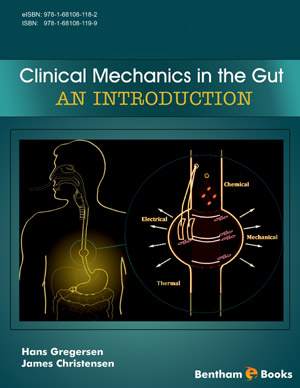Abstract
Improved understanding of gastrointestinal function depends on improved study methods, for one can consider only those phenomena one can see the evidence for. New multidisciplinary efforts that include the use of bioengineering principles can overcome the problems imposed by the inaccessibility of the gut and by its complexity. This chapter outlines several bioengineering models, methods and analyses from studies of gastrointestinal mechanics. The three main themes are conventional techniques for recording gastrointestinal motor operations, methods involving the stimulation of the gut by distending it, and imaging technologies.
Keywords: Bioengineering model, distension, esophagus, functional luminal imaging, impedance planimetry, large intestine, manometry, small intestine, stomach, ultrasonography.

















